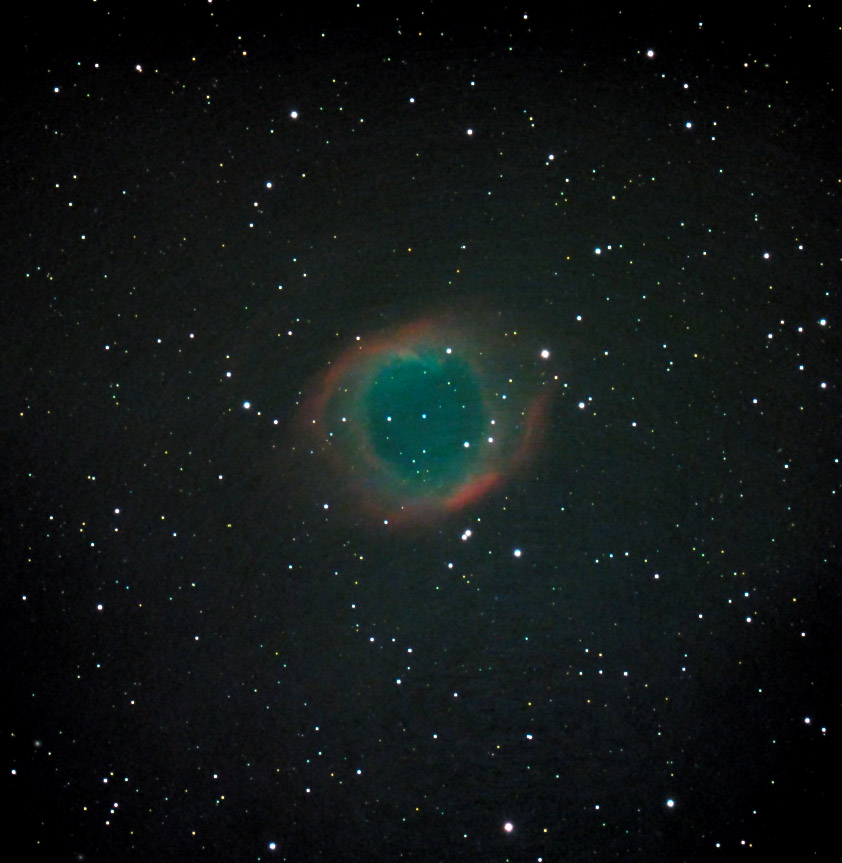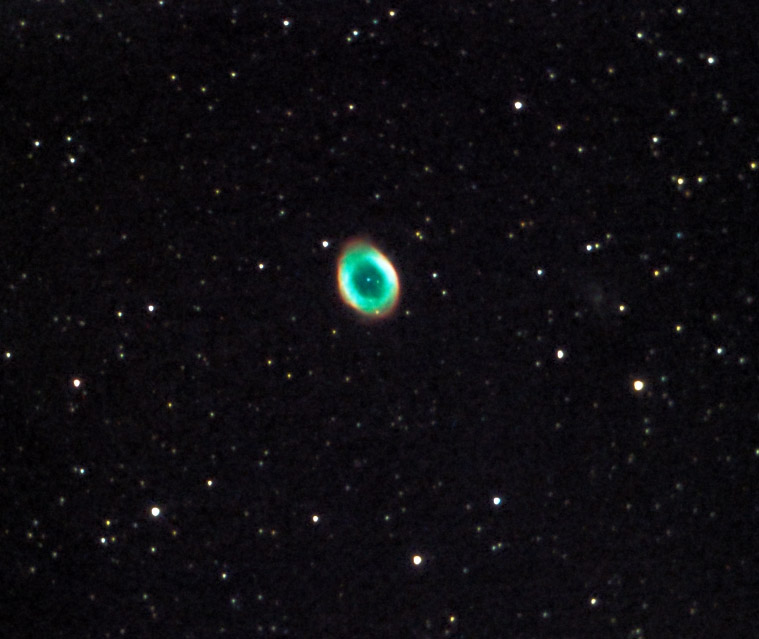Here are two of the prettiest nebulae in the sky: the Helix Nebula (NGC7293) and the Ring Nebula (M57).
These are two classic examples of planetary nebulae – so-called because early observers thought the small disks looked a bit like far-off planets. But planetary nebulae have ABSOLUTELY NOTHING to do with planets! Instead they are the remnants of old medium-sized stars (similar to our sun) that have died somewhat dignified deaths. When they reach the end of their life cycle, such stars slowly expel their outer gaseous layers to form a nebula, which is then heated by the hot core of the shrunken central white dwarf. This will be the fate of our Sun in roughly five billion years.
The Helix Nebula (NGC 7293) (20 min total exposure Nov 6, 2020)

The Helix Nebula is about 655 light years away from us. Since it is one of the closest of such nebulae it appears relatively large. The main ring of the Helix is about 2 light-years across, roughly equivalent to half the distance between our sun and its closest star. However, wispy material from the nebula spreads out at least twice that far into space from the central star.
The Ring Nebula (M57) (6 min total exposure Sep 4, 2020)

The Ring Nebula is four times further away from us than the Helix, at about 2570 light years distance. Through a small telescope, the Ring Nebula looks like a small gray smoke ring in space – it requires photographs to see the colors.
In both of these images it is easy to pick out the dying star at the exact center of the ring.
Previous planetary nebulae that I’ve posted about include the Dumbell and Owl and even NGC 2348.